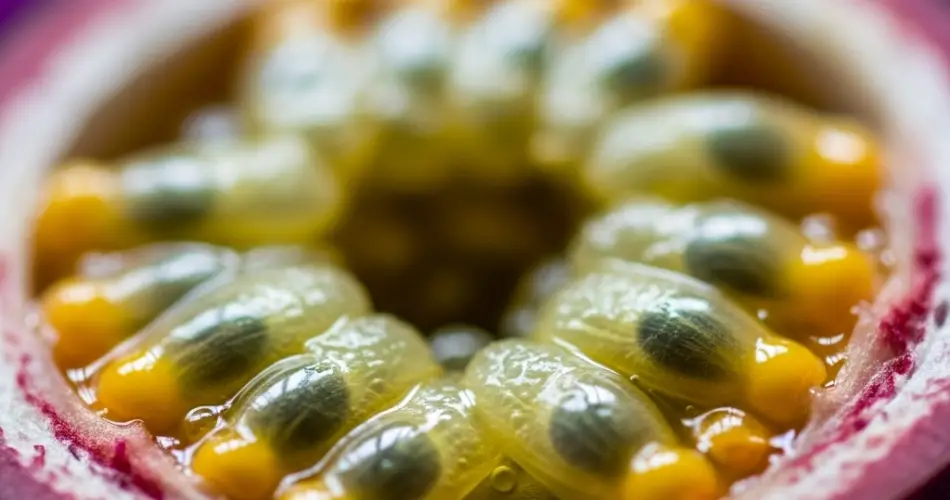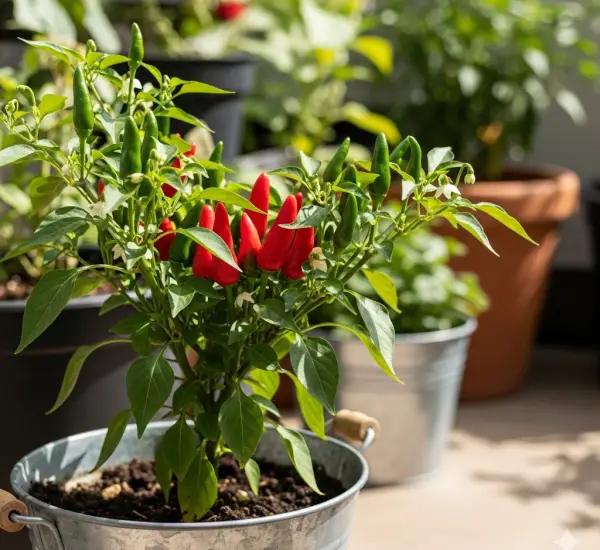Passion fruit, scientifically known as Passiflora edulis, is a tropical vine prized for its delicious, aromatic fruit and striking flowers. Often called passionflower or “pasionaria,” this plant is not only beautiful but also a rewarding crop for gardeners who enjoy exotic fruit cultivation.
Growing passion fruit from seeds can be an exciting and fulfilling project. Whether you want to start a small backyard vine or add a unique climbing plant to your garden, germinating passion fruit seeds at home is easier than you might think. This guide will walk you through the entire process, from seed extraction to planting and care, ensuring the best chance for successful growth.
Understanding Passion Fruit and Its Seeds
Passion fruit is native to South America and thrives in warm climates with plenty of sunlight and humidity. The seeds come inside the juicy fruit pulp, and they contain the potential to sprout into vigorous vines.
The seeds have a hard outer coating, which naturally helps protect them but also means they require some preparation to encourage germination. When grown properly, passion fruit vines can quickly produce flowers and fruit, sometimes within the first year.
Step 1: Extracting and Preparing the Seeds
Start by selecting a ripe passion fruit. The fruit’s skin will be wrinkled or slightly soft, indicating maturity. Cut the fruit open and scoop out the seeds along with the surrounding pulp.
To separate the seeds, place the pulp and seeds in a bowl of water. Stir gently, and the pulp will float while the seeds sink. Rinse the seeds thoroughly to remove all fruit residue, as leftover pulp can encourage mold or fungal growth during germination.
Next, to improve germination rates, it’s recommended to scarify the seeds. This process involves lightly sanding or nicking the hard seed coat with fine sandpaper or a small knife. Scarification helps water penetrate the seed coat, triggering sprouting.
Step 2: Soaking the Seeds
After scarification, soak the seeds in lukewarm water for 24 to 48 hours. This further softens the seed coat and kickstarts the germination process.
Change the water if it becomes cloudy or develops an odor, which can indicate bacterial growth.
Step 3: Sowing the Seeds
Once soaked, plant the seeds in small pots or seed trays filled with a light, well-draining seed-starting mix. You can create your own by mixing equal parts of peat moss (or coco coir) and perlite or sand.
Plant each seed about 1 to 2 cm (around half an inch) deep in the soil. Cover lightly and water gently to moisten the soil without waterlogging.
Step 4: Creating Ideal Germination Conditions
Passion fruit seeds require warmth and humidity to germinate successfully. Aim to keep the soil temperature between 22°C and 28°C (72°F to 82°F). Using a seedling heat mat can help maintain consistent warmth if you live in cooler climates.
Keep the soil moist but not soggy. Covering the pots with clear plastic or placing them inside a propagator helps maintain humidity and prevent drying out.
Place the pots in a bright location with indirect sunlight. Direct sun can be too intense for delicate seedlings.
Step 5: Germination Time and Early Care
Passion fruit seeds typically germinate within 2 to 3 weeks but can sometimes take up to a month. Be patient—don’t disturb the soil to check for sprouts prematurely.
Once seedlings emerge, remove any plastic coverings and move them to a sunnier spot to encourage strong growth. Continue watering to keep the soil moist but allow the surface to dry slightly between waterings.
When seedlings develop 2 to 3 sets of true leaves, transplant them into larger pots with nutrient-rich potting soil.
Step 6: Transplanting Outdoors or to Larger Containers
If you live in a tropical or subtropical region, passion fruit vines can be planted outdoors once they are sturdy and the risk of frost has passed.
Choose a sunny location with well-draining soil. Passion fruit vines grow vigorously and will need a trellis, fence, or other support structure to climb.
If planting in containers, select a large pot (at least 40 liters or 10 gallons) with drainage holes. Use a rich, organic potting mix and provide regular feeding with balanced fertilizer.
General Care Tips for Passion Fruit Vines
-
Watering: Keep soil consistently moist but avoid waterlogging. Passion fruit vines thrive with deep watering once or twice a week.
-
Sunlight: Full sun is ideal for flowering and fruit production.
-
Feeding: Use organic compost or balanced fertilizer every 4–6 weeks during the growing season.
-
Support: Provide strong trellises or wires for the vine to climb.
-
Pruning: Prune annually to encourage airflow and new growth. Remove dead or weak branches.
Common Issues and How to Address Them
Passion fruit vines may face some common challenges:
-
Pests: Watch for aphids, mites, and scale insects. Use organic pest control methods such as neem oil or insecticidal soap.
-
Diseases: Root rot from overwatering and fungal diseases like fusarium wilt can occur. Ensure good drainage and avoid excess moisture.
-
Flower and Fruit Drop: This often results from inconsistent watering or nutrient deficiencies.
Final Thoughts
Growing passion fruit from seed is a rewarding journey that combines patience and simple horticultural techniques. From harvesting your own seeds to nurturing young vines, the process connects you to nature’s cycles and offers the chance to enjoy your own fresh passion fruit.
With the right care, your passionflower vine can flourish beautifully, producing stunning blooms and delicious fruit that will make your garden stand out.



